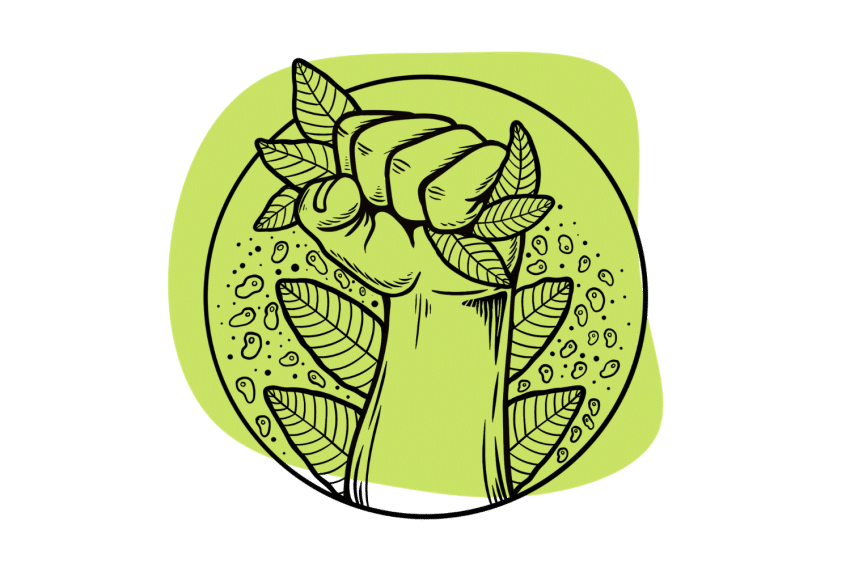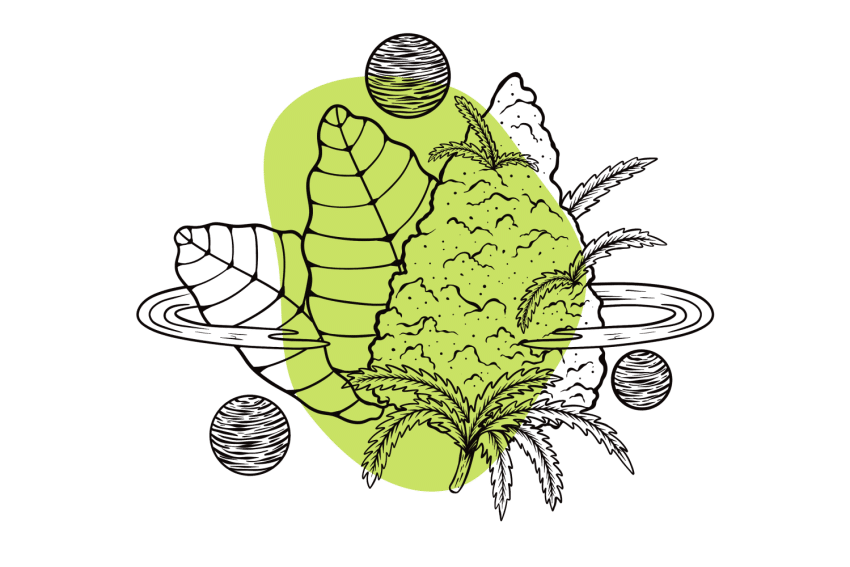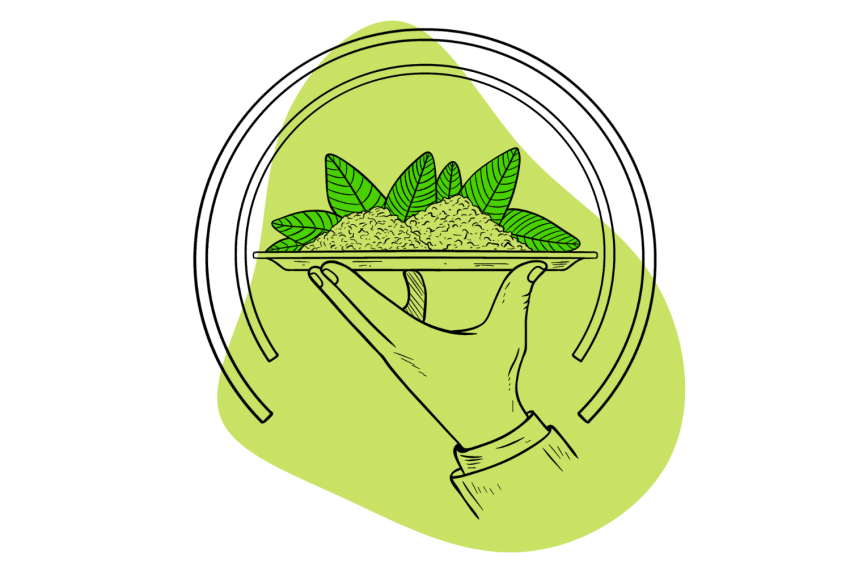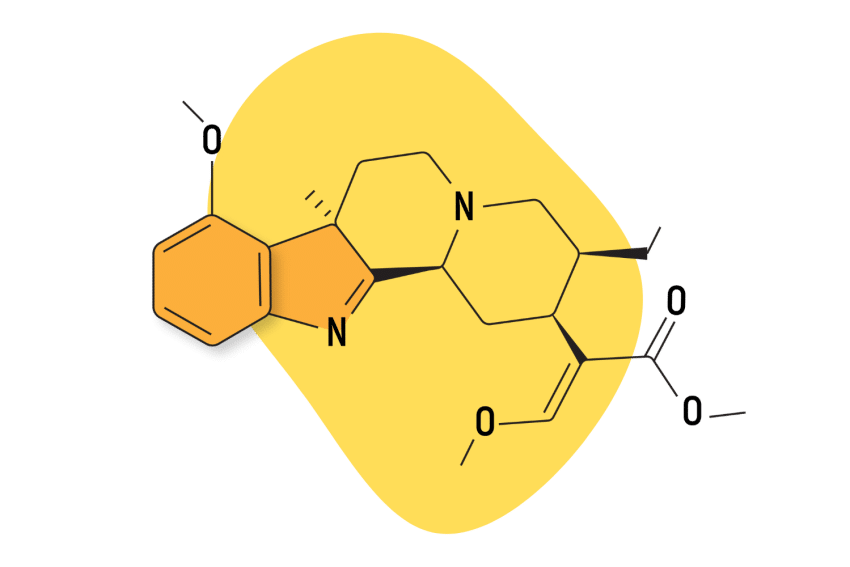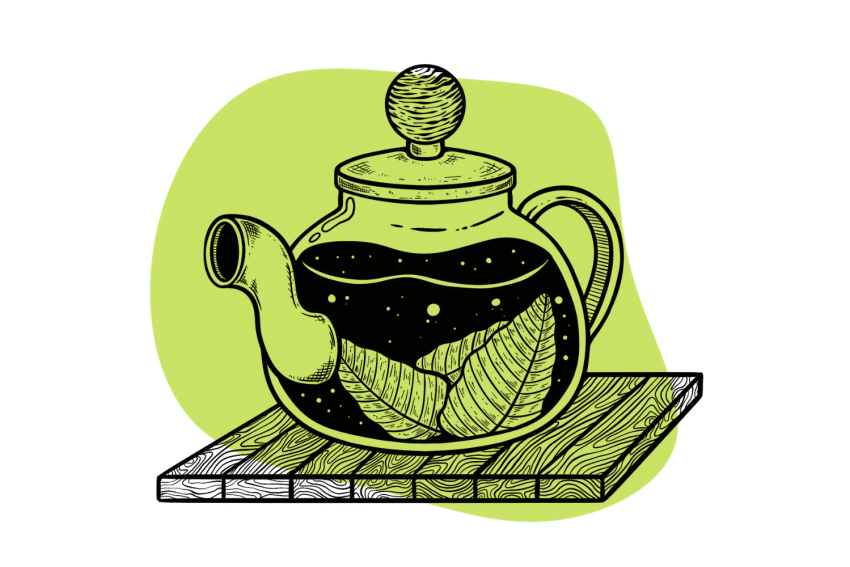Is Kratom an Opioid?
The active constituents in kratom (mitragynine and 7-hydroxymitragynine) are technically classified as opiates because they have a high affinity for the opiate pain receptors in the human body.

An opioid is a substance that acts on opioid receptors. They’re primarily used for pain relief and anesthesia.
Kratom itself is a plant, but it contains several active alkaloids that bind to the opiate receptors. This technically makes kratom an opiate.
But there are some key differences here, too, that make things a little more complicated.
Structurally, opiate drugs like morphine are dramatically different than the structure kratom alkaloids — 7-hydroxymitragynine and mitragynine.
Moreover, kratom interacts with other non-opioid systems, such as the adrenergic system [1], serotonergic system, dopaminergic system, and various others.
Many kratom alkaloids even provide a muscle-relaxing effect that helps reduce pain by relieving muscle tension [2]. That is something that even opioids don’t provide.
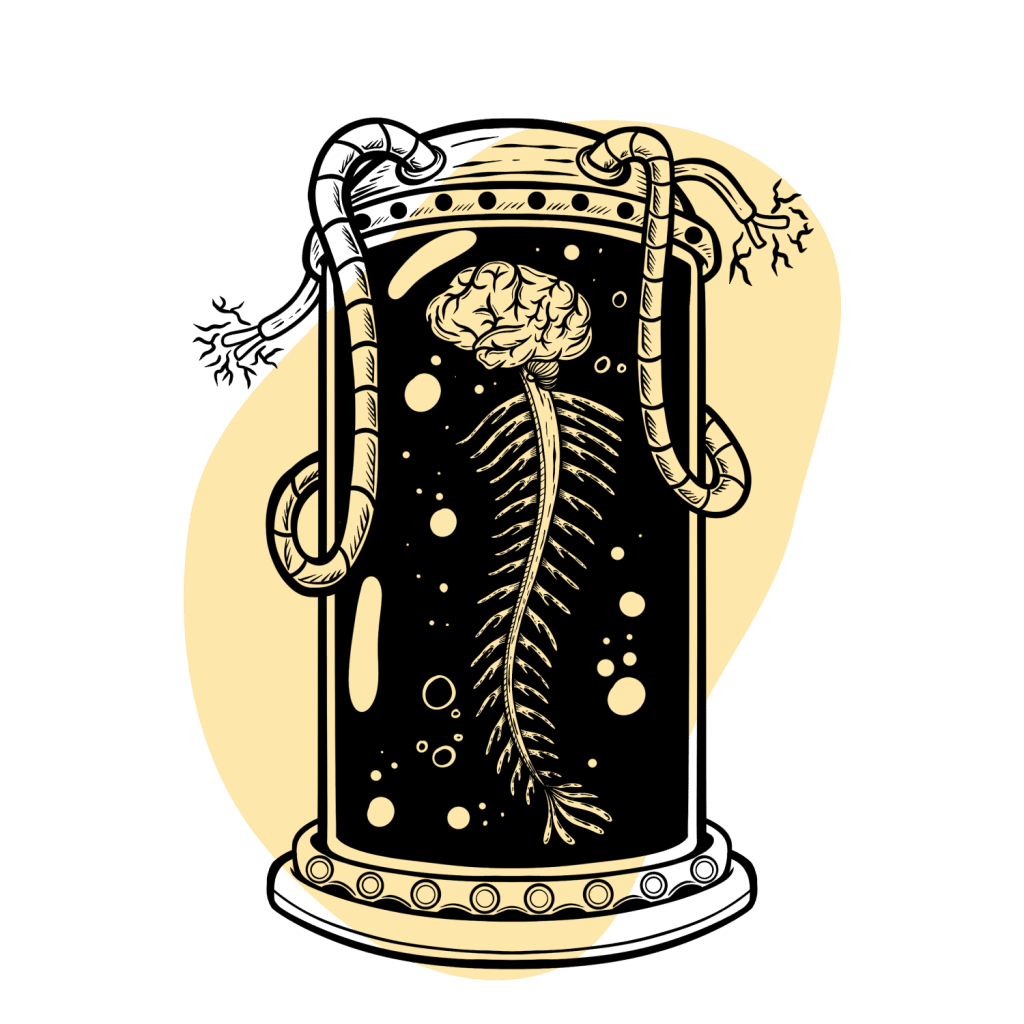
Opiate Binding Capacities
Comparing the binding capacities of opiates on the various opiate receptors (mu-, delta-, and kappa-opiate receptors). Measured in Ki, nM.
The lower the number, the higher the binding affinity of the compound.
As you’ll see, the kratom alkaloids mitragynine and 7-hydroxymitragynine are significantly weaker than synthetic opioids like fentanyl and morphine.
| Compound Name | Mu Opiate Receptors | Delta Opiate Receptors | Kappa Opiate Receptors | Reference # |
|---|---|---|---|---|
| Ohmefentanyl | 0.01 | 10 | 32 | 15 |
| Carfentanil | 0.02 | 3.3 | 43 | 13 |
| Samidorphan | 0.05 | 2.6 | 0.23 | 21 |
| Naloxonazine | 0.05 | 8.6 | 11 | 12 |
| Diprenorphine | 0.07 | 0.23 | 0.02 | 12 |
| Mitragynine pseudoindoxyl | 0.09 | 3.02 | 79.4 | 11 |
| Sufentanil | 0.15 | 50 | 75 | 12 |
| CTOP | 0.18 | 1,000 | 1,000 | 12 |
| Phenazocine | 0.2 | 5 | 2 | 18 |
| Levallorphan | 0.21 | 2.18 | 1,100 | 16 |
| Etorphine | 0.23 | 1.4 | 0.13 | 12 |
| Nalmefene | 0.24 | 16 | 0.08 | 17 |
| Xorphanol | 0.25 | 1 | 0.4 | 19 |
| β-Funaltrexamine | 0.33 | 48 | 2.8 | 12 |
| Dermorphin | 0.33 | 1,000 | 1,000 | 12 |
| Fentanyl | 0.39 | 1,000 | 255 | 12 |
| Levorphanol | 0.42 | 3.61 | 4.2 | 16 |
| Dihydroetorphine | 0.45 | 1.82 | 0.57 | 24 |
| Cyclazocine | 0.45 | 6.3 | 5.9 | 14 |
| Hydromorphone | 0.47 | 18.5 | 24.9 | 13 |
| Bremazocine | 0.62 | 0.78 | 0.08 | 15 |
| Met-enkephalin | 0.65 | 1.7 | 1,000 | 12 |
| Lofentanil | 0.68 | 5.5 | 5.9 | 12 |
| Bremazocine | 0.75 | 2.3 | 0.09 | 12 |
| Oxymorphone | 0.78 | 50 | 137 | 15 |
| β-Chlornaltrexamine | 0.9 | 115 | 0.08 | 12 |
| Naloxone | 0.93 | 17 | 2.3 | 12 |
| Levomethadone | 0.95 | 371 | 1,860 | 16 |
| Nalorphine | 0.97 | 148 | 1.1 | 12 |
| Quadazocine | 0.99 | 2.6 | 0.5 | 19 |
| Naltrexone | 1 | 149 | 3.9 | 12 |
| β-Endorphin | 1 | 1 | 52 | 12 |
| Naloxone | 1.1 | 16 | 12 | 14 |
| Binaltorphimine | 1.3 | 5.8 | 0.79 | 15 |
| Butorphanol | 1.7 | 13 | 7.4 | 14 |
| Methadone | 1.7 | 435 | 405 | 16 |
| Morphine | 1.8 | 90 | 317 | 15 |
| DAMGO | 2 | 1,000 | 1,000 | 12 |
| Norbinaltorphimine | 2.2 | 65 | 0.03 | 12 |
| Alazocine | 2.7 | 4.1 | 3.2 | 13 |
| Ethylketazocine | 3.1 | 101 | 0.4 | 12 |
| Normorphine | 4 | 310 | 149 | 15 |
| Buprenorphine | 4.18 | 25.8 | 12.9 | 16 |
| Pentazocine | 5.7 | 31 | 7.2 | 12 |
| Mitragynine | 7.24 | 60.3 | 1,100 | 11 |
| Oxycodone | 8.69 | 901 | 1,350 | 16 |
| Cyprodime | 9.4 | 356 | 176 | 15 |
| Levacetylmethadol | 9.86 | 169 | 1,020 | 16 |
| Nalbuphine | 11 | 1,000 | 3.9 | 12 |
| Hydrocodone | 11.1 | 962 | 501 | 16 |
| Levomethorphan | 11.2 | 249 | 225 | 16 |
| Naltriben | 12 | 0.01 | 13 | 12 |
| 7-Hydroxymitragynine | 13.5 | 155 | 123 | 11 |
| Dextromethadone | 19.7 | 960 | 1370 | 16 |
| Spiradoline | 21 | 1,000 | 0.04 | 12 |
| Dynorphin A | 32 | 1,000 | 0.5 | 12 |
| Tifluadom | 32 | 189 | 2.1 | 14 |
| Dextropropoxyphene | 34.5 | 380 | 1,220 | 16 |
| Morphiceptin | 56 | 1,000 | 1,000 | 12 |
| Naltrindole | 64 | 0.02 | 66 | 12 |
| Codeine | 79 | 1,000 | 1,000 | 12 |
| Oxymorphindole | 111 | 0.7 | 228 | 13 |
| Tianeptine | 383 | >10,000 | >10,000 | 22 |
| Pethidine (meperidine) | 385 | 4,350 | 5,140 | 15 |
| Dextrorphan | 420 | 34,700 | 5,950 | 16 |
| DPDPE | 1,000 | 14 | 1,000 | 12 |
| Dextrallorphan | 1,140 | 2,660 | 34.6 | 16 |
| Dextromethorphan | 1,280 | 11,500 | 7,000 | 16 |
| Tramadol | 2,120 | 57,700 | 42,700 | 16 |
| Salvinorin A | >10,000 | >10,000 | 16 | 20 |
Kratom vs. Opioids: Similarities
The fundamental similarity between kratom and opioids is the mechanism they employ to relieve intense muscular pain. Both activate opioid receptors in the spinal cord and brain by blocking nerve signals.
Furthermore, kratom and opioids interact with dopamine, serotonin, and adrenergic receptors, helping regulate emotions and improve mood [3].
Both are addictive, so respecting doses and spacing them out is crucial to avoid building tolerance. However, kratom addiction is not as hard to overcome as opioid addiction [4].
Kratom vs. Opioids: Differences
Kratom and opioids have similar analgesic effects, yet the former has a relatively lower potential for abuse or harm, according to Johns Hopkins Medicine researchers [5]. Also, unlike many prescription analgesics, the red and green strains can reduce pain caused by tight muscles and spasms.
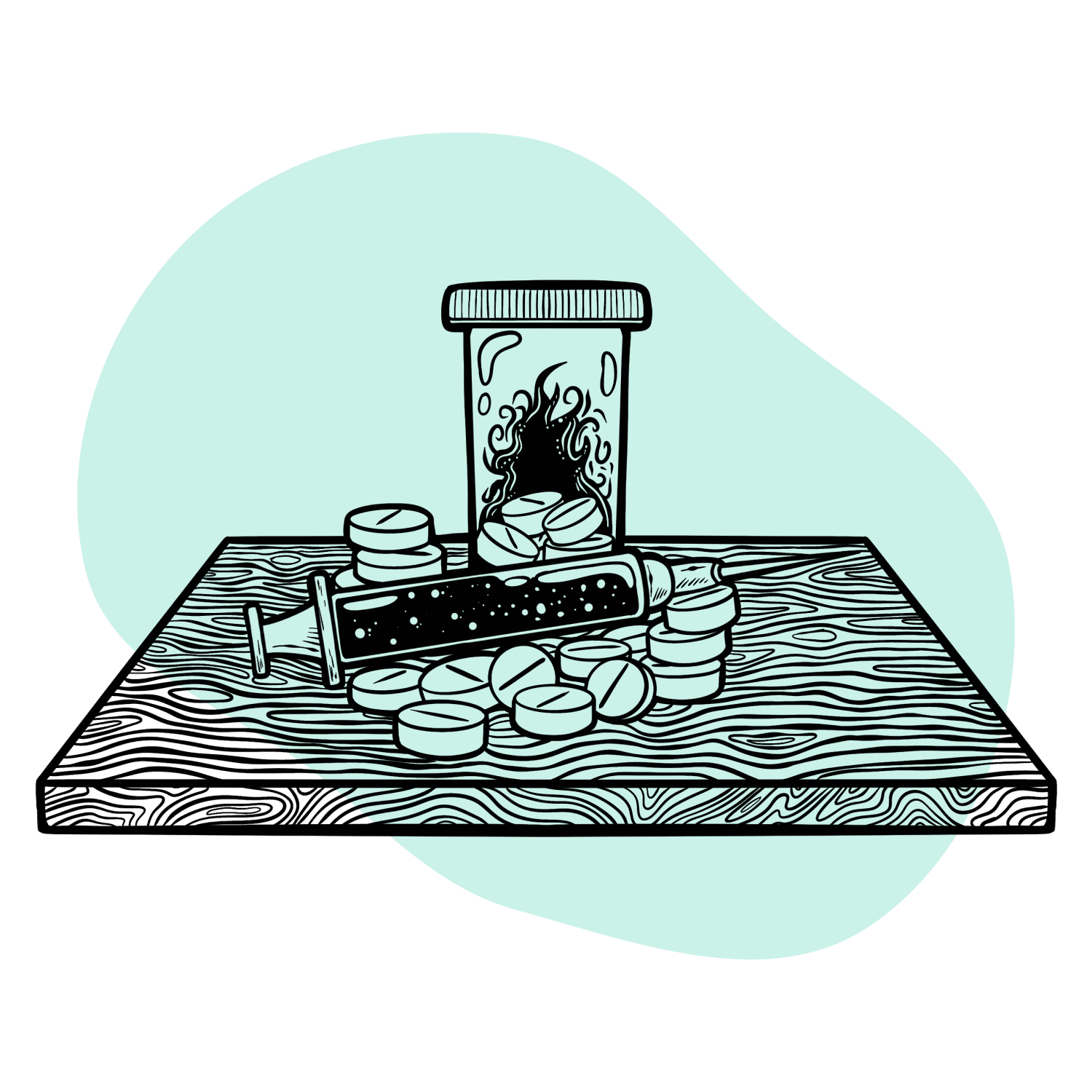
Many opioids can cause death by overdose by activating mu-opioid receptors that can affect the respiratory system [6] — leading to respiratory depression and death. Although kratom also activates these receptors, it doesn’t appear to inhibit respiration rates the way synthetic opiates do — so users are unlikely to die from an overdose [7].
What Is Kratom?
Kratom (Mitragyna speciosa) originates from Southeast Asia, mainly from the tropical rainforests of Thailand, Indonesia, and Borneo. Various native cultures have used it for centuries in traditional medicine or simply to get through a hard day’s work.
The herb comes in three main varieties: red, white, and green. Each has varying effects due to different alkaloid concentrations.
Red vein kratom is high in 7-hydroxymitragynine, an alkaloid that promotes sedative effects. People mainly use these strains to relieve muscle pain, improve sleep quality, and induce relaxation.
In contrast, white vein kratom is high in mitragynine, which many believe translates into potent stimulant properties that help increase energy, improve mood, and stay focused. These strains are mainly preferred by students or workers who need a productivity boost throughout the day.

Finally, green vein kratom is in the middle of these two, providing milder stimulant and sedative effects, depending on the dose. For this reason, these strains are perfect for beginners [8].
You may have seen yellow vein kratom products on the market. These strains are a mixture of two or more varieties. For this reason, the word “yellow” does not refer to the color of the vein but to what happens when you combine green and red strains.
Also see: Kratom vs. Cannabis: Uses, Benefits, & Interactions.
Kratom for Opioid Withdrawal
The body can develop dependence over prolonged use of opioids, which results in experiencing withdrawal symptoms that can interfere with daily life. These symptoms, such as anxiety, panic attacks, and insomnia, are highly unpleasant and bothersome.
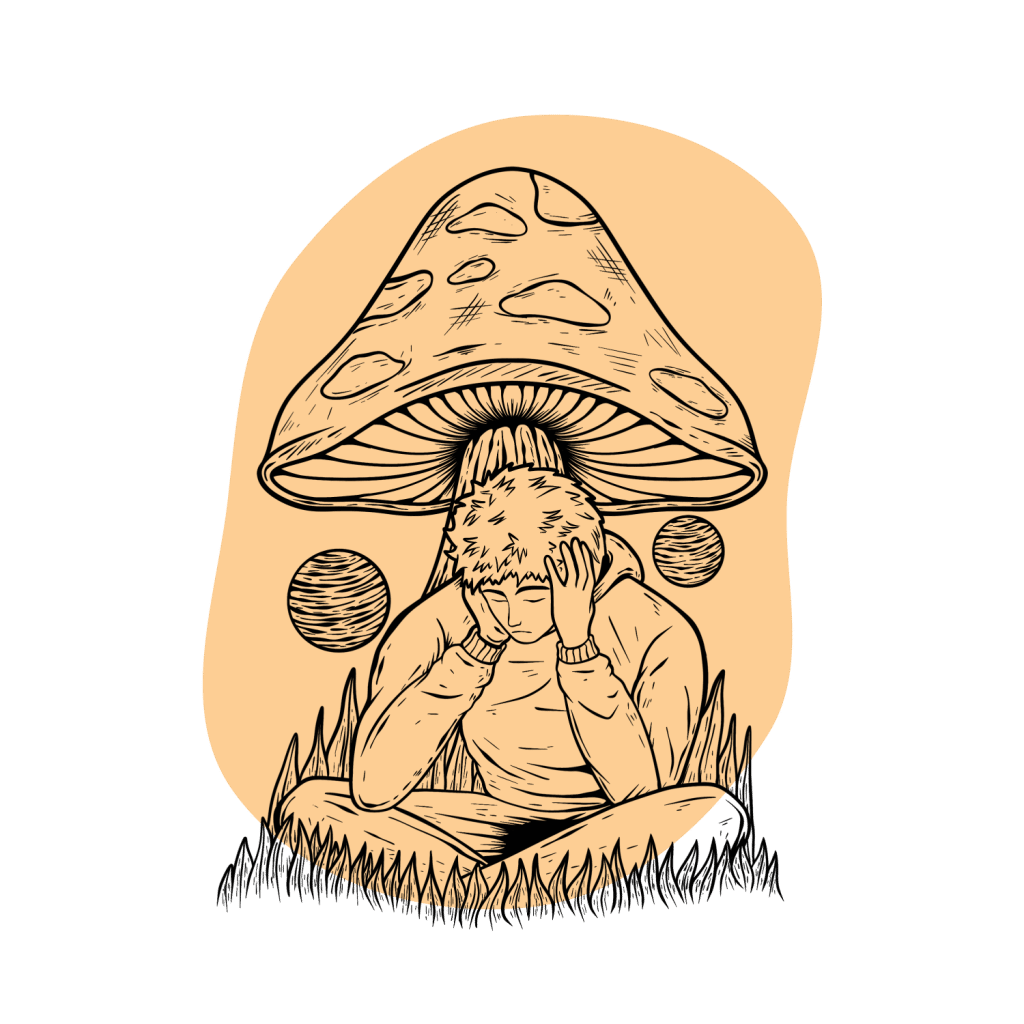
In recent years, kratom has proven to be an excellent tool for treating addiction to these narcotics [9]. Acting similarly to various opioid medications, it can reduce withdrawal symptoms, helping the body return to homeostasis.
Many users consider these to be the best strains for opioid withdrawal:
- Maeng Da: Many think red, green, and white-veined Maeng Da strains are excellent for treating opioid withdrawal due to their high content of mitragynine and 7-hydroxymitragynine.
- Red Thai: Consumers seem to swear that this is one of the best strains to treat addiction, as it significantly relieves anxiety and produces feelings of peace and well-being.
- Red Bali: This strain acts as a potent opioid receptor agonist, considerably reducing pains and body aches.
Never combine kratom with opioids, as the herb can make the effects of these narcotics even stronger.
How to Use Kratom for Opioid Withdrawal
Generally, people who try to quit a substance do so suddenly or gradually. Although neither process is easy, kratom can make it easier. Still, keep in mind that quitting opiates cold turkey carries immense danger and could be fatal in extreme cases [10].
If you choose to stop immediately, withdrawal symptoms can quickly occur. You can use kratom to curb these cravings and symptoms and calm them down, but this is still the most challenging way to quit.
On the other hand, if you decide to quit opioids gradually, you will need to reduce your opioid intake little by little and, at the same time, increase the dose of kratom. This way is the safest of the two and significantly easier on the body and mind.
What Is the Dose of Kratom for Opioid Withdrawal?
The answer to this question is very complex, as the ideal dosage depends on several factors, such as your body’s weight, tolerance, and even the strain used. However, we can give you some general parameters to guide you.
Most people require a dose at the higher end of the spectrum — between 5 and 15 g of powder. High doses of kratom have relaxing and sedative effects, ideal for calming anxiety and many other withdrawal symptoms.
Is Kratom Safe?
Yes, kratom is safe when taken responsibly.
Although kratom is safe, abusing it can cause unpleasant side effects. Therefore, controlling the amount, leaving considerable gaps between doses, and monitoring weekly and monthly intake are crucial.

Avoid poor-quality products as they can also be dangerous. We recommend you trust vendors endorsed by the American Kratom Association (AKA).
These are the most common side effects of kratom:
- Anxiety
- Constipation
- Dizziness and lightheadedness
- Lethargy
- Nausea
Is Kratom Legal?
Yes, kratom is legal in most parts of the world.
Also, medicine increasingly supports the use of kratom, so the states and countries that choose to criminalize it are likely to legalize the herb in the future. In the US, most states allow for the use of kratom and have no regulations in place.

These are the states that have banned kratom:
- Alabama
- Arkansas
- Indiana
- Rhode Island
- Vermont
- Wisconsin
These are the states that have regulated kratom:
- Arizona
- Georgia
- Nevada
- Utah
Why Do Some States Ban Kratom?
Many government regulators consider kratom dangerous because of its close resemblance to opiates. They wrongly assume it is just as addictive and will significantly affect public health.
However, the World Health Organization (WHO) has recently reviewed the herb and concluded that it presents no danger. Therefore, many states and countries have decided to legalize it.
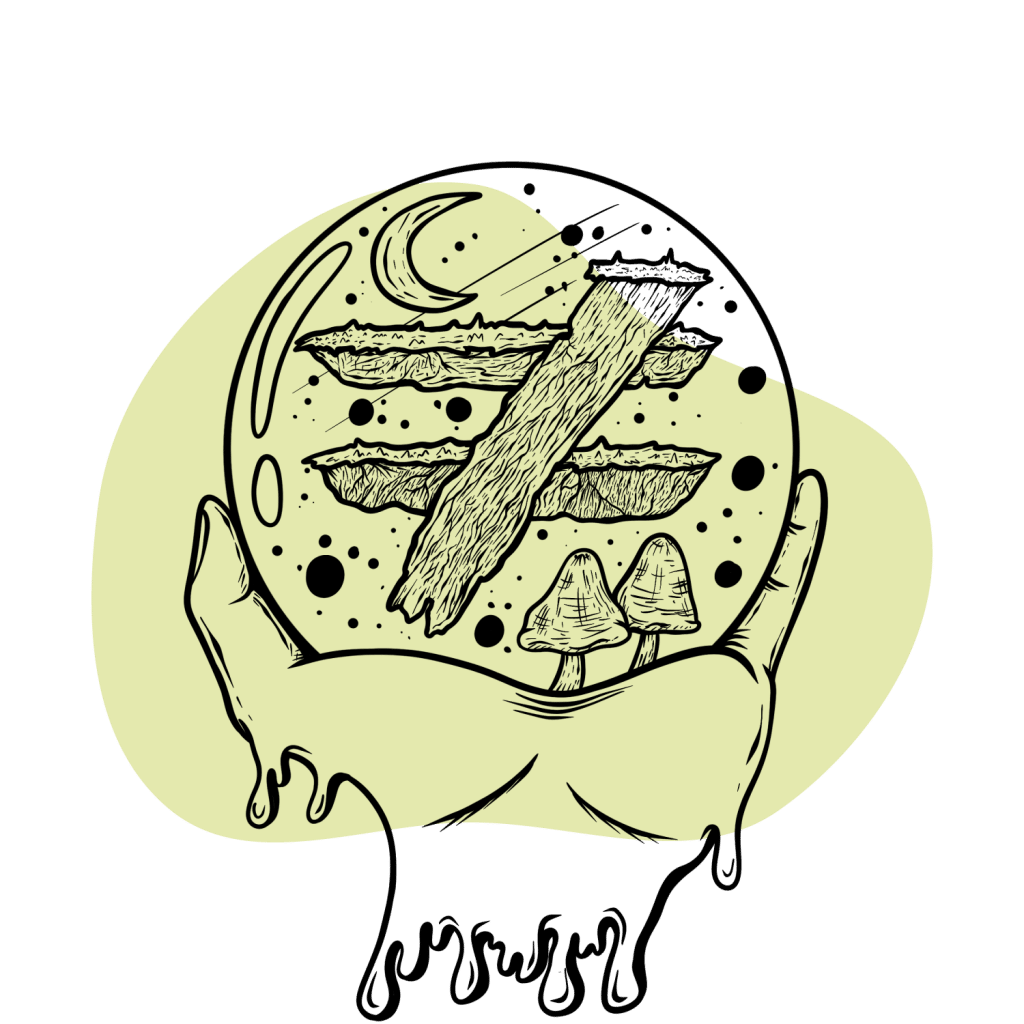
References
- Nur Aziah Hanapi, Nelson Jeng-Yeou Chear, Juzaili Azizi, Siti R. Yusof (2021). Kratom Alkaloids: Interactions With Enzymes, Receptors, and Cellular Barriers. Front Pharmacol, 12: 751656.
- Dimy Fluyau, Neelambika Revadigar (2017). Biochemical Benefits, Diagnosis, and Clinical Risks Evaluation of Kratom. Front Psychiatry, 8: 62.
- Johnson, L. E., Balyan, L., Magdalany, A., Saeed, F., Salinas, R., Wallace, S., … & Grundmann, O. (2020). Focus: Plant-based Medicine and Pharmacology: The Potential for Kratom as an Antidepressant and Antipsychotic. The Yale Journal of Biology and Medicine, 93(2), 283.
- Behnood-Rod, A., Chellian, R., Wilson, R., Hiranita, T., Sharma, A., Leon, F., … & Bruijnzeel, A. W. (2020). Evaluation of the rewarding effects of mitragynine and 7‐hydroxymitragynine in an intracranial self-stimulation procedure in male and female rats. Drug and alcohol dependence, 215, 108235.
- Johns Hopkins Medicine (2020). Natural Herb Kratom May Have Therapeutic Effects And Relatively Low Potential For Abuse Or Harm, According To A User Survey.
- Bateman, J. T., Saunders, S. E., & Levitt, E. S. (2021). Understanding and countering opioid‐induced respiratory depression. British Journal of Pharmacology.
- Henningfield, J. E., Fant, R. V., & Wang, D. W. (2018). The abuse potential of kratom according the 8 factors of the controlled substances act: implications for regulation and research. Psychopharmacology, 235(2), 573-589.
- Luisa Boffaa, Corrado Ghèb, Alessandro Bargea, Giampiero Mucciolib, Giancarlo Cravottoa (2018). Alkaloid Profiles and Activity in Different Mitragyna speciosa Strains. Laboratory of Organic Chemistry, Laboratory of Experimental Pharmacology, Dipartimento di Scienza e Tecnologia del Farmaco, University of Turin.
- Stanciu, C. N., Gnanasegaram, S. A., Ahmed, S., & Penders, T. (2019). Kratom withdrawal: a systematic review with case series. Journal of psychoactive drugs, 51(1), 12-18.
- Mansi Shah, Martin R. Huecker (2020). Opioid Withdrawal. National Library of Medicine.
- Takayama, H., Ishikawa, H., Kurihara, M., Kitajima, M., Aimi, N., Ponglux, D., … & Horie, S. (2002). Studies on the synthesis and opioid agonistic activities of mitragynine-related indole alkaloids: discovery of opioid agonists structurally different from other opioid ligands. Journal of medicinal chemistry, 45(9), 1949-1956.
- Raynor, K., Kong, H., Chen, Y., Yasuda, K. A. Z. U. K. I., Yu, L., Bell, G. I., & Reisine, T. E. R. R. Y. (1994). Pharmacological characterization of the cloned kappa-, delta-, and mu-opioid receptors. Molecular pharmacology, 45(2), 330-334.
- Filizola, M., Villar, H. O., & Loew, G. H. (2001). Molecular determinants of non-specific recognition of δ, μ, and κ opioid receptors. Bioorganic & medicinal chemistry, 9(1), 69-76.
- Tam, S. W. (1985). (+)-[3H] SKF 10,047,(+)-[3H] ethylketocyclazocine, μ, κ, δ and phencyclidine binding sites in guinea pig brain membranes. European journal of pharmacology, 109(1), 33-41.
- Corbett, A. D., Paterson, S. J., & Kosterlitz, H. W. (1993). Selectivity of ligands for opioid receptors. Opioids, 645-679.
- Codd, E. E., Shank, R. P., Schupsky, J. J., & Raffa, R. B. (1995). Serotonin and norepinephrine uptake inhibiting activity of centrally acting analgesics: structural determinants and role in antinociception. Journal of Pharmacology and Experimental Therapeutics, 274(3), 1263-1270.
- Bart, G., Schluger, J. H., Borg, L., Ho, A., Bidlack, J. M., & Kreek, M. J. (2005). Nalmefene induced elevation in serum prolactin in normal human volunteers: partial kappa opioid agonist activity? Neuropsychopharmacology, 30(12), 2254-2262.
- Wentland, M. P., Lou, R., Lu, Q., Bu, Y., VanAlstine, M. A., Cohen, D. J., & Bidlack, J. M. (2009). Syntheses and opioid receptor binding properties of carboxamido-substituted opioids. Bioorganic & Medicinal Chemistry Letters, 19(1), 203-208.
- Gharagozlou, P., Hashemi, E., DeLorey, T. M., Clark, J. D., & Lameh, J. (2006). Pharmacological profiles of opioid ligands at kappa opioid receptors. BMC pharmacology, 6, 1-7.
- Roth, B. L., Baner, K., Westkaemper, R., Siebert, D., Rice, K. C., Steinberg, S., … & Rothman, R. B. (2002). Salvinorin A: a potent naturally occurring nonnitrogenous κ opioid selective agonist. Proceedings of the National Academy of Sciences, 99(18), 11934-11939.
- Wentland, M. P., Lou, R., Lu, Q., Bu, Y., Denhardt, C., Jin, J., … & Bidlack, J. M. (2009). Syntheses of novel high affinity ligands for opioid receptors. Bioorganic & medicinal chemistry letters, 19(8), 2289-2294.
- Gassaway, M. M., Rives, M. L., Kruegel, A. C., Javitch, J. A., & Sames, D. (2014). The atypical antidepressant and neurorestorative agent tianeptine is a μ-opioid receptor agonist. Translational psychiatry, 4(7), e411-e411.
- Frink, M. C., Hennies, H. H., Englberger, W., Haurand, M., & Wilffert, B. (1996). Influence of tramadol on neurotransmitter systems of the rat brain. Arzneimittel-Forschung, 46(11), 1029-1036.
- Katsumata, S., Minami, M., Nakagawa, T., Iwamura, T., & Satoh, M. (1995). Pharmacological study of dihydroetorphine in cloned μ-, δ-and κ-opioid receptors. European Journal of Pharmacology: Molecular Pharmacology, 291(3), 367-373.

